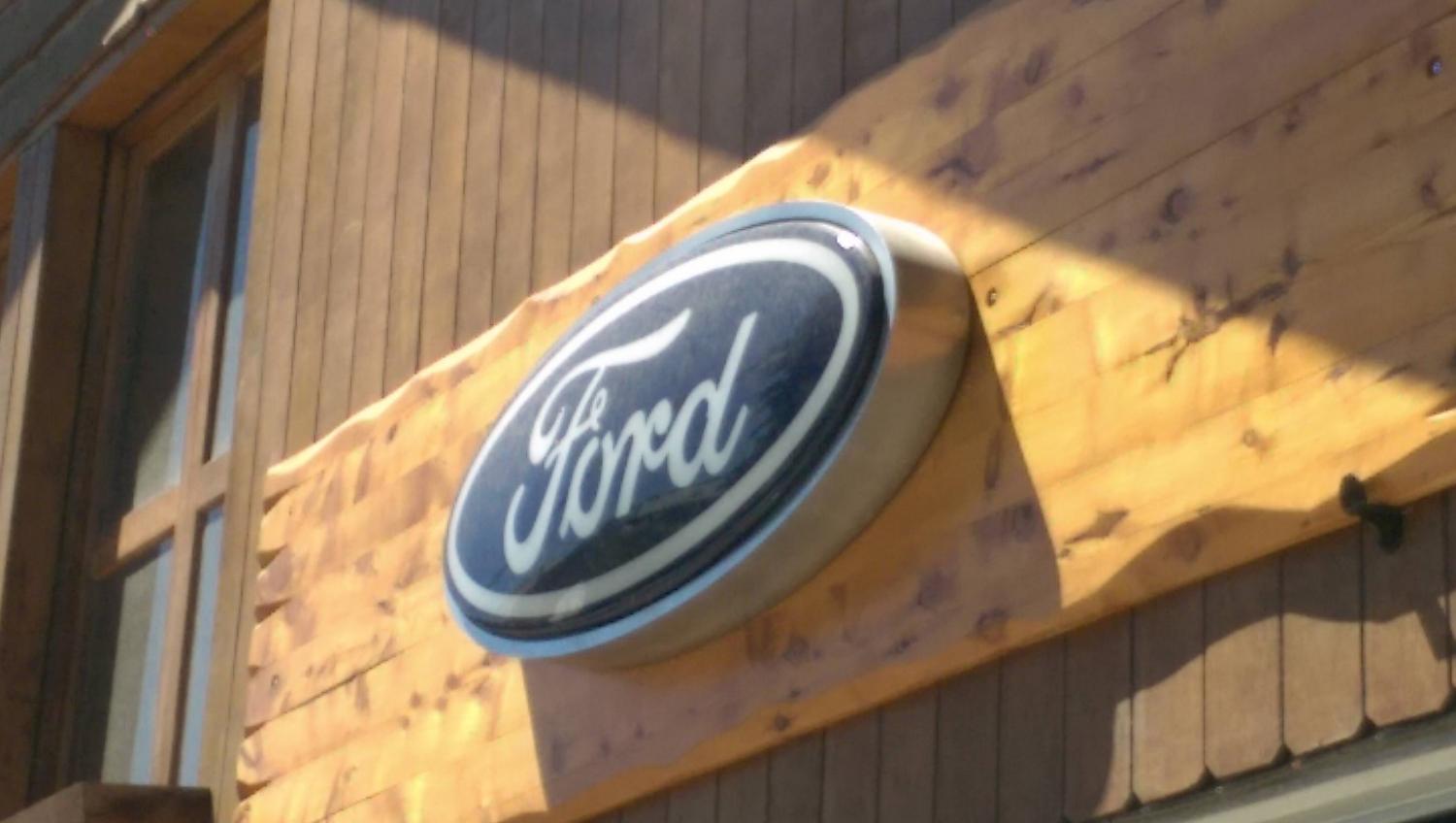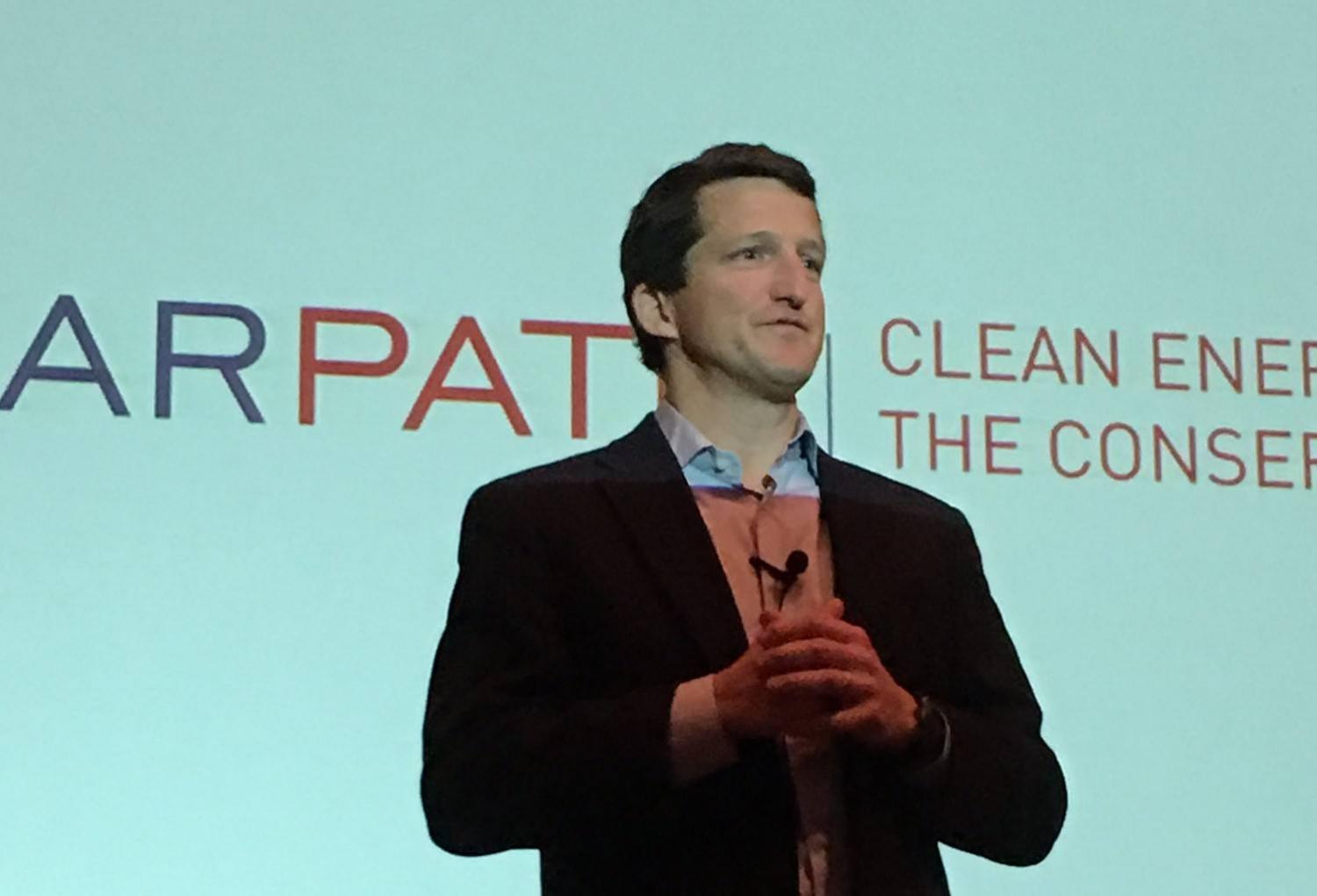3p Weekend: Everything You Need to Know About Climate Change, in Cartoons!


With a busy week behind you and the weekend within reach, there’s no shame in taking things a bit easy on Friday afternoon. With this in mind, every Friday TriplePundit will give you a fun, easy read on a topic you care about. So, take a break from those endless email threads and spend five minutes catching up on the latest trends in sustainability and business.
By Suzanne Chew
Is climate change getting you down? This weekend, why not check out over a hundred cartoons that will make even the most fatigued among us crack a smile (or two)! Fish getting acid face peels? Polar bears getting it on with grizzlies? Noah's Ark becoming a bit of a squeeze? Quirky and with a fair bit of cheek, these are just a few of the cartoons in the new book "Little Climate: We need to talk about climate disruption."
Why cartoons?
Let me ask you this: When was the last time you talked to a friend or family member about climate change? Research by Yale University found that only 1 in 25 Americans hear people they know talk about it at least once a week. This rises to 16 percent who hear people they know talk about it at least once a month, but, perhaps unsurprisingly, a full quarter of Americans never hear people they know talk about it at all. What about you?
Why aren’t we talking more?
There are many reasons, but it probably doesn’t help that our most recognized climate change reports are practically unreadable. Research published in the journal Nature Climate Change tested the readability of reports by the United Nations’ Intergovernmental Panel on Climate Change (IPCC), and compared these with keynote physics papers by Albert Einstein and Stephen Hawking. You can probably guess the result: Not only did the IPCC reports score lower, they scored exceptionally low.
When tested, coverage of research findings in the IPCC reports by quality newspapers scored 41 points. Tabloid papers scored higher with 52 points. What about the IPCC reports themselves? Fourteen points for the report summaries, with just seven points for the key report focused on our climate mitigation solutions.
This in itself might be rather worrying – after all, these reports are written for a non-technical reader, which many of our policymakers may be. But, how important is it really if most of us rely on the papers for our news? Turns out, the same research shows that the more readable the media coverage, the more pessimistic it’s likely to be.
If we think it’s all too awful to even talk about, how can we start reclaiming the power we have to solve it?
How much power do we have?
Behavioral change, tough though it may be, is one of the biggest hammers in our toolbox against climate change. Choices like moderating how much beef and mutton we eat, adjusting our thermostat by one degree, washing our laundry on a cold cycle, choosing an electric car – you've heard it all before, but now let's throw in some numbers!
Looking just within Europe, research by the European Commission found that realistic behavioral change could shave off around 600 million tons of carbon dioxide just from the continent in 2020.
Research by the PBL Netherlands Environmental Assessment Agency found that if we all chose a healthy diet, we could bring down the cost of limiting warming to 2 degrees Celsius by half. That’s a whopping 50 percent discount from following a healthy diet, as recommended by the Harvard Medical School for Public Health, of around 90 grams of meat and eggs a day. Just how much could all our everyday actions add up to?
Everyday conversations, everyday actions!
That’s where this little book of cartoons comes in – to bring climate change back into our everyday conversations, in the home and at the office, and hopefully spark a few everyday actions.
Happily readable and bubbling with fun facts, these cartoons crystallize key findings from the IPCC reports and other published papers, showcasing the science, solutions and many opportunities we have. Saving the world whilst laughing in the face of adversity? There’s no better way to start!
What about you? What are the everyday actions you’ve started or inspired in others?
"Little Climate" -- A sneak preview of the book:
All images from "Little Climate: We need to talk about climate disruption" by Suzanne Chew. Used with permission.
Suzanne Chew is the Founder and Director of Little Climate, an organization based in Singapore focused on building climate change awareness through innovative media. She is also the author of “Little Climate: We need to talk about climate disruption”, a fun book of cartoons with everything you need to know about climate change. Suzanne has worked in the climate change sector since 2007, and was previously the Director of a non-profit focused on low-carbon projects for poverty alleviation in Asia and Africa.
The digital book "Little Climate: We need to talk about climate disruption" is available for sale at www.littleclimate.com. Readers of TriplePundit enjoy a 35% discount with the promotion code “reachfor350ppm”.
The Race to Accelerate Global Organic Cotton Production


Only 1 percent of all cotton produced in the world is organic. Despite the increasing demand from textile and apparel industries, production of organic cotton is on the decline and poses a tremendous risk to both the environment and the future of sustainably-produced fabrics.
Fortunately, there is a plan on the horizon to help change course and disrupt the industry as a whole. Enter the Organic Cotton Accelerator (OCA) — a multi-stakeholder initiative spearheaded in 2013 by U.S. retailer Eileen Fisher and European brands C&A, H&M and Kering. Its purpose is to identify and fund interventions, strategies and new areas of development and opportunity to increase organic cotton production.
Shona Quinn, sustainability leader for Eileen Fisher, contends that organic cotton production and innovation in the industry is critical to the future of sustainable apparel, namely her brand's commitment to consumers who are already seeking lifestyle changes that often begin and end with their clothing purchases.
“We’ve been supporting organic cotton for at least 10 years and supporting the work through textile exchanges,” Quinn shared with 3p. “However, organic cotton hasn’t gained traction in the market or at the field level. As our business grows, we are creating goals of wanting to support 100 percent organic cotton in our line. But first, we need to make sure we have access to that fiber.”
Quinn and her team came to the table with their competitors a few years ago to help the industry grow as a whole. In 2015, supply-chain consultancy NewForesight provided a detailed business case-study outlining a development strategy and opportunities for the accelerator to coordinate investments to improve farmer production and transparency while reducing risks of low-integrity organic cotton.
The accelerator, which incubates this year across select farms in India, is not without its challenges. Quinn pointed to barriers the accelerator hopes to address and analyze as it relates to economic mobility issues that highly influence the way farmers go about producing cotton.
“What’s built into the farmer’s DNA is that a higher yield creates more money. The transition from GMOs to organic will require that we understand and provide knowledge to farmers — many of whom come from several generations of family farmers — re-orienting them with ancestral cotton-growing knowledge combined with new technology innovation,” Quinn said.
The OCA plans to set the standard for organic farmer training by establishing a central farmer curriculum, knowledge transfer, and best known agricultural and business practices to improve effectiveness. In addition to providing training curriculum, the OCA will create a distribution system to reach farmers with 100 percent organic seeds to protect the integrity of cotton crops.
Quinn also pointed to the opportunities for the accelerator to help advance farmers’ business acumen as a way to influence growth of the organic cotton industry while addressing some of the challenges farmers face. Existing traditional loan programs and investment initiatives put pressure on the farmer to produce and pay back the loan. Challenges arise when yields turn out to be less than expected. When farmers are unable to they pay back the loan, both the farmer’s business and family are at risk.
The OCA’s established financing model will be made available to farmers in the form of revolving loans. The approximate numbers of available financing dollars and farmer repayment terms have yet to be revealed.
The OCA is set to launch this year in a two-year prototyping phase where selected farmers across India will participate during the incubation period -- with the goal of increasing strategies to scale organic cotton production through 2018.
Core activities of the accelerator will include:
- Establish and manage an accelerator fund that will unlock financing for farmers and processors
- Enhance traceability and transparency across the cotton supply chain.
- Raise the profile of organic cotton among consumers, brands and other stakeholders through compelling communication and services
“Just as a society, and as a brand member of this stakeholder group, it is important that we continue to build the inner connections between people, planet and the economy," Quinn said. "It can happen in the fashion industry. This accelerator program ensures that it does."
Image credit: Organic Cotton Accelerator
Governors Announce Bipartisan Accord for a New Energy Future


On Feb. 16, a bipartisan group of 17 governors signed the Governors' Accord for a New Energy Future.
The accord represents a joint commitment among both Democratic- and Republican-led states to take action promoting clean energy, better and cleaner transportation choices, a modern electrical grid, and a plan for a new energy economy.
You can read the full accord here, which states, in part:
“American prosperity has always depended on embracing new ideas and technologies,” the governors state in the Accord for a New Energy Future. “Embracing new energy solutions allows us to expand our economy while protecting the health of our communities and natural resources. These improvements will help secure a safe and prosperous future for our country.“We recognize that now is the time to embrace a bold vision of the nation’s energy future, and to do so, states are once again poised to lead.”
The coalition of participating states represents 127 million Americans, providing a platform for collaboration, sharing ideas, and leveraging partnerships in energy planning and policymaking.
The bipartisan partnership represents states with a diverse energy mix and policy portfolio. Take Delaware, for example. Its overall energy consumption is low, and it's powered primarily with natural gas. But its per-capita energy usage is unexpectedly high due its energy-intensive oil refining and chemical manufacturing industry. Or Nevada: a state that imports more than 90 percent of the energy it consumes from other states, relying on long-distance energy transmission and working to expand its own energy grid. All are committed to work together to "make transformational policy changes to secure a stronger energy future for their states and the nation," the Accord reads.
With the Accord now officially executed by state leaders, senior advisors from each state will convene to hash out initial steps to put plans into action for energy diversification, expanded sources of clean energy, a modern, resilient energy grid, and cleaner transportation options.
State partnerships such as this one are key to building on the momentum toward a new, resilient and clean energy future.
Image credit: Flickr/Bruce Guenter
This post first published at TDS Environmental Media
Ford the Latest Company to Dump ALEC


It is not easy being the American Legislative Exchange Council (ALEC) these days. The organization has long purported to be a non-partisan group dedicated to free markets and federalism that “puts the people in control.”
The reality, however, is that ALEC has been unmasked as a front for large corporations that seek to exert anti-worker and anti-environment legislation in both the federal and state governments across the U.S. In turn, advocacy groups including the Center for Media and Democracy exposed this Koch brothers-funded scheme for its relentless efforts to fund climate deniers and oppose any development of clean-energy technologies.
The companies that fund ALEC often become stuck in a public-relations nightmare once connections to the group are exposed. During the past few years, more than 100 companies and several influential nonprofits have cut ties with ALEC. The latest domino to fall is Ford Motor Co., which last fall revealed it was a financial contributor to ALEC.
Last November’s disclosure put Ford in an uncomfortable position, as the automaker has long touted its environmental and sustainability initiatives. Many of its initiatives are impressive, considering the automobile industry’s long history of opposing legislation related to automobile safety, environmental stewardship and fuel efficiency.
For several years, Ford has tinkered with alternative materials to make its cars more ecologically friendly, such as the use of upholstery made from recycled plastic bottles. The company promised to deploy what will be Michigan’s largest solar array within its suburban Detroit headquarters in order to do its part to address climate change. In a nod to changing consumer preferences, Ford has even said it will partner with GM to develop more fuel-efficient fuel systems. Here and abroad, Ford has also shown that it can be a responsible company: In India, for example, the company taught its customers how to be safer drivers and leveraged its technology and vehicles to improve the delivery of health care services in poor rural areas.
Therefore, the admission that Ford was a large funder of ALEC was at the very least puzzling and, at most, hypocritical in the eyes of some of the company’s stakeholders and customers. More citizens have become more discerning about the businesses from which they buy their products and services, and ties to ALEC left a black mark that could not be easily wiped away. The news also came at a most inopportune time, as more companies shed themselves of any ties to ALEC, including big pharma giant Johnson & Johnson, Internet commerce behemoth eBay and everyone’s favorite corporate punching bag, BP. Other companies that were once part of ALEC but have dropped their memberships include Google, Visa, Microsoft, McDonald’s and Shell.
Whatever one may think of the presidential candidacies of Donald Trump or Bernie Sanders, a stubborn fact remains: Their current level of support in part stems from the fact that many citizens are convinced government is only working for the wealthiest few and the best connected. ALEC’s impact on legislation across the country is one of those symptoms, and corporations have realized they have to match their words and deeds with the company they keep — or the lobbying groups they fund. Increasingly, the result is that ALEC is the odd man out.
Image credit: Leon Kaye
Study: Organic Can Feed the World Sustainably


According to a review of 40 years of scientific research, organic food -- which grew rapidly around the world in the past decade -- can fulfill the world's food needs while providing huge environmental, social and health benefits.
One of the major arguments of Big Agriculture companies like Monsanto is that organic is a niche industry, one that can only feed the select rich in a few developed countries, but, due to cost, it cannot scale to feed the world's poor or those in developing countries. Their solution: monoculture, using a few crops and huge amounts of heavily-subsidized pesticides and fertilizers to create vast mega-farms that have huge environmental externalities.
"Conventional agriculture may produce more food, but it often comes at a cost to the environment. Biodiversity loss, environmental degradation and severe impacts on ecosystem services have not only accompanied conventional farming systems, but have often extended well beyond their field boundaries," John Reganold, regents professor of soil science and agroecology at Washington State University, and doctoral candidate Jonathan Wachter wrote in a blog post about the study.
Organic yields can be less than those from so-called conventional practices (in my opinion, organic was conventional for most of human history, before our agricultural system was hijacked by Big Ag), but not always. For example, in drought conditions -- like those that have ravaged Californian farmers for the past few years -- organic actually produced higher yields due to the greater water-holding capacity of organic soils, Reganold and Wachter found. And these types of extreme events are, unfortunately, becoming more and more common due to climate change. Organic could provide farmers with much-needed resilience.
What is needed now, according to the report's chief authors, are better policies globally that promote organic farming. That's because, despite the rapid growth, organic still only accounts for a tiny percentage of global agriculture, due to the massive subsidies that go into conventional agriculture.
"Significant barriers to farmers adopting organic agriculture hinder its expansion. Such hurdles include existing policies, the costs of transitioning to organic certification, lack of access to labor and markets, and lack of appropriate infrastructure for storing and transporting food," wrote Reganold and Wachter.
This is nothing new -- we all knew organic has huge benefits. But the study now takes away one of the chief weapons in vast public-relations messaging used by Big Ag. Unfortunately, they have another tool at their disposal: money, which they have used to lobby for favorable regulations not only in the United States, but also internationally. This includes the millions they spent on a campaign of misinformation against GMO labeling initiatives in California, Washington and Nevada and, now, a lawsuit to stop a similar initiative in Vermont.
Hopefully science will help organic win this battle, as the future of our planet, and farming, depends on it.
Image credit: Wikimedia Commons
DriButts Enlists Diapers in the Global Fight Against Disease


The advancement of mobile technology in the developing world is an exciting trend, unless you consider one sobering statistic: Data out there suggest that more people worldwide have cell phones than access to toilets.
This lack of access to sanitation is rife in countries including India, where public defecation is an ongoing health problem. Plenty of reasons explain this disconnect between the rapid adoption of technology and the lack of what to many of us is a basic human right. The blame is put on poor education, poverty, the fact that many people do not have title to the land they occupy and the lack of infrastructure. The result is that the United Nations estimates that more than 1 billion people worldwide have no access to proper toilet facilities.
Easy access to toilets could save the lives of an estimated 200,000 children annually. But one problem is that, even where public toilets or latrines are available, many infants and toddlers are not properly diapered. Their feces end up contributing to the spread of diseases, which in part contributes to the estimated 1.8 billion people who are using a source of drinking water contaminated by human fecal matter. Now a social enterprise is trying to reverse that trend by selling goods that can help provide diapers for youngsters living in poor rural areas worldwide.
DriButts is the brainchild of Michael and Starla Wahl of Georgia. The couple became aware during past travels of the risks to which children were subjected by not being properly diapered. They resolved to create a diaper that could keep children clean, dry and comfortable and at the same time could easily be cleansed and maintained.
Visitors to their website can either make a one-time donation or buy a product, such as a diaper bag, that can help fund the manufacture and delivery of these diapers. Thirty dollars can buy two diapers, which will be delivered to Haiti, Honduras or Romania during one of the several “diaper drops” DriButts has scheduled this year. Those who are interested can also be part of the “DriTribe,” which is a monthly subscription to donate two of these diapers monthly. Those who contribute to DriButts via this route receive pictures of the families and updates about the community that benefit from these diapers.
The diapers are comprised of two parts: a moisture-wicking outer shell and an absorbent insert made from bamboo and other anti-bacterial materials that is breathable and can be easily washed. After a diaper is soiled, any solid waste can be dumped into a latrine or designated spot located a safe distance from any drinking water source. The diaper is then separated, and washed in a bucket with soap that DriButts provides to recipients. Each part can then be hand-wrung, with the water again dumped into that designated spot. The shell and absorbent insert can dry in as little as 45 minutes on a clothesline. Once completely dried, the diaper can then be reassembled and be used once again.
DriButts’ employees not only teach diaper recipients how to use the product, but also maintain relationships with local community leaders to ensure that the diapers are used and cleaned correctly.
DriButts seeks volunteers to join its employees on trips, or “diaper drops” -- nine are scheduled so far this year. Most are to Haiti, with two scheduled for Honduras; one to Romania is set for this summer. The cost ranges from $1,000 to $1,300 plus the cost of a flight for a journey that lasts from one week to 10 days. Those who want to help scale DriButts’ work can also start a campaign within their school, work, church or community organization.
Image credit: DriButts
Nuclear Gets a New Champion


North Carolina clean-energy philanthropist Jay Faison is becoming known as a proven entrepreneur who's trying to change the narrative about the economic and climate benefits of clean energy, especially among his Republican cohorts. Along with the ClearPath Foundation he founded and formalized in 2015, he’s embarking on a bid to affect policy.
Among his early priorities is a sharp focus on the need and value of more capital investment and market-based solutions, paired with less bureaucratic red tape and increased government efficiency, to clear the way to significant commercial nuclear power advances.
Faison, who made his early fortune growing video and technology companies, may be the nuclear industry’s freshest voice for the sizable role next-generation nuclear reactors can play in a lower-carbon future in the U.S. and the world.
“America needs to lead the world in this effort,” he told clean-energy professionals, educators, venture capitalists and students at the third annual North Carolina Clean Tech Summit, hosted by the University of North Carolina in Chapel Hill, on Thursday.
“All roads,” Faison said of the work needed to attract much-needed private capital, "lead to Washington, D.C" Constituents of the most influential federal lawmakers need to reach them with clear messages that elected officials and their staffs can understand, he continued.
While Faison was addressing the 500 or so Summit attendees, his staff in Charlotte and Washington, DC were busy launching a political action committee, ClearPath Action. Equipped now with his own super PAC,Faison hopes to raise and spend at least $5 million on behalf of about a dozen congressional Republicans who embrace clean-energy policies. He said he hasn't ruled out getting involved in the presidential election.
“I’m always surprised to hear how many Republicans haven’t heard from you,” he told the audience. “Don’t assume somebody’s going to be against clean-energy technologies unless you have a conversation. It’s very doable. It’s about the messages and the way you do it. It’s all about how you position it.”
“There is a huge need for the curation of these ideas into types of graphical and easy-to-understand communications that lawmakers will digest, and then act on,” Faison added. He said circulating a 40-page white paper doesn’t cut it anymore.
“Our system is just broken as heck,” Faison said as part of a follow-up panel discussion on innovative investment approaches. He sees the potential for a “super-competitive, next-generation” nuclear industry in the U.S. But that may not happen because other countries may want it more, along with the jobs and economic growth that go with it.
He said the U.S. risks relinquishing leadership as the locus of the best research and development. Countries such as Indonesia are willing to offer credit enhancements and other incentives to attract private capital.
ClearPath recently refreshed its push -- arguing for a bigger role for nuclear power, along with natural gas, hydropower and innovation. Among other things, it calls for removing politics from the siting of permanent storage for spent commercial fuel rods and motivating the private sector to solve it, led by an independent government agency. (Note: The U.S. Nuclear Regulatory Commission is an independent agency.)
“Spent fuel is costing Americans hundreds of millions of dollars each year,” ClearPath states. “Unresolved waste is tarnishing the existing and next generation technologies.”
ClearPath counts 48 companies that are working on advanced reactors and their components in North America. For its part, the U.S. government can support private-sector research with “low- to no-cost reforms;” which prompts one to ask: What can Faison and Clear Path do about it?
The answer in a nutshell: Nuclear and other clean-energy advocates need to communicate better. They need to find ways to truly connect with their elected officials.
“Government affairs will be part and parcel to clean energy forever,” Faison said.
Image credit: Jim Pierobon
Ethiopia Looks to Animal Bones to Ensure Food Security


Depending on what source you access, Ethiopia now has the world’s fastest growing economy, or at least ranks somewhere in the top 10.
This rise is in part because of the government’s decision to diversify its largely agrarian economy by boosting its manufacturing, textile and energy-generation sectors. But this country of 96.5 million is still one of Africa’s poorest nations, with per-capita income only hovering around $550. About a third of all Ethiopians live under the government’s poverty line of 60 cents a day.
Growing crops such as teff, maize, barley and wheat allows most Ethiopians to get by, but there is one huge problem: Much of Ethiopia’s land is highly acidic and lacks phosphorus. The need to import and then transport fertilizer is a massive problem as its cost to Ethiopian farmers ranks amongst the highest on the planet.
The encouraging news for Ethiopia is that a bevy of nonprofits and companies are striving to boost Ethiopian yields. Self Help Africa, for example, is one NGO that works with farmers to instill more efficient techniques from seed generation to more sustainable land stewardship. Companies including PepsiCo have invested in developing crops such as chickpeas that can be exported while nourishing the soil.
But the risks of climate change are a cloud that hangs over Ethiopia’s future. Access to quality seeds is often a setback to growing resilient crops, and the country’s barren soil still presents a stubborn hurdle too difficult for many farmers to overcome. But a partnership between the U.S. embassy in Addis Ababa, Cornell University, and Jimma University in the southwestern region of Ethiopia could help boost farm production thanks to the reuse of a form of waste ubiquitous across the country.
As outlined in detail by science journalist Virginia Gewin, Ethiopia has one resource it has not tapped: animal bones. More than 100 million cows, sheep and goats roam across Ethiopia’s countryside and towns, and their numbers are increasing by approximately 3 percent annually. Five years ago, the U.S. Embassy awarded a grant to Cornell and Jimma researchers to find a solution for Ethiopia’s depleted and acidic soil, and the link between all those bones and a potential answer for revolutionizing the country’s farming sector was made.
The statistics are a bit grisly — one study suggests that Ethiopia’s annual animal bone waste adds up to approximately 300,000 tons. But get past the visual, and all of those ribs, vertebrae and femurs could generate over 36,000 tons of phosphorus a year. That would allow Ethiopia to produce up to 58 percent of its phosphorus fertilizer requirements, eliminating the need to spend over $100 million in such imports. Much of the world’s phosphorus comes from Morocco and other North African countries, so instability in that region could already cause prices to spike similarly to the exponential rate at which they rose in 2008.
As Gewin explained, the first riddle was to find a way to process all those bones. Researchers eventually arrived at a process that involved the churning of sugars, cornstarch and water blended with powdered bone until it turned into small pellets. The next challenge, which is always a problem when manufacturing a “sustainable product,” was to ensure that they could procure a reliable supply of raw materials. That became an easy task as efforts to collect bones were so successful that researchers had to slash the buying price of bones in half. Nevertheless, bone collectors who scoured through restaurants, municipal dumps and even city streets saw their daily incomes double.
If this new source of fertilizer, currently test marketed as “Abyssinia Phosphorus,” can continue to scale and prove to be cost-effective, the benefits could soar far beyond Ethiopia’s borders. Agronomists and researchers in other countries dedicated to their countries’ long-term food security could very well find an answer in their own backyard, while reducing exports and building economic opportunities for citizens.
Image credit: Flickr (Ken Harrel)
Latest Malheur News: Cliven Bundy Indicted, Denied Bail


A gang of armed thugs took over the Malheur National Wildlife Refuge in Oregon last month with the purported aim of helping the local community assert their "rights" against federal land management, and things quickly went south from there.
After a weeks-long standoff, gang leader and Arizona businessman Ammon Bundy and his brother, Ryan, were arrested and indicted on federal charges along with a score of other supporters, many of whom have been denied bail. That now includes Cliven Bundy, the family patriarch and Nevada rancher who incited an armed gang of his own during a standoff with federal agents back in 2014.
Considering that Ammon Bundy is part of the business community, TriplePundit has been taking a look at the whole Malheur mess from a corporate social responsibility perspective. Now it's time to turn that lens on to Cliven Bundy, who is facing far more serious charges than his sons and their cohorts.
CSR: Words matter
Before we begin, let's clarify why TriplePundit is using words like "gang" and "thugs" to describe the perpetrators of the Malheur takeover.
If you followed the Malheur story from its inception, you have probably noticed that journalists struggled to come up with an adequate label to describe these weaponized actors.
Words like "occupiers" and "protesters" barely seem to scrape the surface. In normal conversation, those words generally refer to actions without firearms. In the case of the Bundys, as an apparent compromise, you'll find frequent references to "armed protesters," but even that falls short descriptively.
Ammon Bundy and his gang openly and heavily armed themselves, barricaded themselves inside a working federal facility for six weeks, and dared law enforcement to remove them by force. They claimed to "educate" the local community, but their actions antagonized virtually every local stakeholder group, including local ranchers and local government workers, especially those who worked at the Malheur refuge.
Ammon and his gang also trashed the Malheur headquarters, plowed a new road through historic Paiute tribe lands, and literally left piles of s**t behind.
From a CSR perspective, the Bundys now have some serious damage control on their hands. In public statements and on the Bundy Ranch blog, they've rebranded their actions as "civil disobedience" or even "peaceful" and "educational." That's fair enough if your starting point is an unarmed sit-down, but it's clearly a fabrication in relation to what occurred during the six weeks that the Bundys and their gang spent in and around the Malheur refuge.
Why words matter
We bring the word thing up because both Ammon and Cliven Bundy have forcefully justified their actions based on their interpretation of some of the most important words written in modern history, the U.S. Constitution.
The Bundys occupy a sort of constitutional parallel universe, promoted by the Koch-funded lobbying group ALEC, in which the federal government has no authority to manage lands outside of Washington, D.C.
In this universe, the right to openly carry modern weapons is unabridged, the use of those weapons is justified more often than not (see ALEC's promotion of "stand your ground" laws), and the only law enforcement authority recognized by the Constitution is the local county sheriff.
These three elements converged at the Malheur refuge in Oregon, just as they did two years ago when Cliven Bundy called upon an armed gang to help him ward off federal agents in Nevada.
The Cliven standoff was the culmination of a decades-long effort by the rancher to avoid paying the normal -- and exceedingly low -- fees to the federal government for grazing his cattle on public property.
It's important to note that federal agents came to remove privately-owned cattle from public land, not from Cliven's private property. Nevertheless, the threat of extreme violence (the agents were apparently outnumbered 4 to 1) forced the episode to a draw, and Cliven was never called to account for his actions.
Until now.
Cliven Bundy indicted
That brings us up to the arrest and indictment of Cliven Bundy. In much the same way that Ammon and his leading supporters were lured into a trap, Cliven was lured out of Nevada and into Oregon. His choice of travel by air provided law enforcement with the assurance that he and his bodyguard would be unarmed upon arrival at Portland International Airport, and he was promptly arrested.
So, here is the indictment against Cliven Bundy, from the U.S. Attorney's Office of the District of Nevada. It's almost two years late, but given the alternative of a firefight at the Bundy ranch, the peaceful conclusion appears to be well worth the wait:
Nevada resident Cliven Bundy and four others were indicted by the federal grand jury today on 16 felony charges related to the armed assault against federal law enforcement officers that occurred in the Bunkerville, Nev. area on April 12, 2014.[snip]
Cliven D. Bundy, 69, of Bunkerville, Nev., Ryan C. Bundy, 43, of Mesquite, Nev., Ammon E. Bundy, 40, of Emmet, Idaho, Ryan W. Payne, 32, of Anaconda, Mont., and Peter T. Santilli, Jr., 50, of Cincinnati, Ohio, are charged with one count of conspiracy to commit an offense against the United States, one count of conspiracy to impede or injure a federal officer, four counts of using and carrying a firearm in relation to a crime of violence, two counts of assault on a federal officer, two counts of threatening a federal law enforcement officer, three counts of obstruction of the due administration of justice, two counts of interference with interstate commerce by extortion, and one count of interstate travel in aid of extortion.
The indictment also alleges five counts of criminal forfeiture which upon conviction would require forfeiture of property derived from the proceeds of the crimes totaling at least $3 million, as well as the firearms and ammunition possessed and used on April 12, 2014.
The indictment certainly doesn't struggle with labels. Here are some snippets describing the perpetrators:
... a massive armed assault against federal law enforcement officers...... the defendants are alleged to have planned, organized and led the assault in order to extort the officers...
... conspiring among themselves to plan and execute these crimes...
... using armed force against law enforcement officers...
... Cliven Bundy was the leader, organizer and chief beneficiary of the conspiracy...
Additionally, U.S. Attorney Daniel G. Bogden stated:
"The rule of law has been reaffirmed with these charges. Persons who use force and violence against federal law enforcement officers who are enforcing court orders, and nearly causing catastrophic loss of life or injury to others, will be brought to justice."
Yes, words matter
We have previously noted that the Bundys are parroting ALEC arguments and acting out, however clumsily, the fundamental goal of ALEC and the Koch brothers, which is to undermine or entirely eliminate federal authority over the use of public lands.
This effort has been plowing forward under the media radar for many years, but the Bundys ham-handedness could finally expose it for what it is: a land grab for private gain.
In that context, it's worth noting that the Bundys and their supporters position themselves as patriotic defenders of the U.S. Constitution, but when it comes time to act, they blissfully ignore their own arguments.
That's particularly true when it comes to the constitutional authority of the county sheriff, which these so-called patriots recognize as the only lawful authority.
We have already noted that the Malheur refuge is located in Harney County, Oregon, where Sheriff David M. Ward repeatedly warned Ammon Bundy, weeks in advance of the Malheur takeover, that his presence in the local community would not be helpful. Ammon ignored that guidance, and continued to ignore Sheriff Ward's repeated appeals for him to leave after the takeover.
Similarly, during the 2014 standoff in Nevada, Cliven Bundy repeatedly ignored the warnings of Clark County Sheriff Doug Gillespie to keep his actions, and those of his supporters, to a peaceful protest. Sheriff Gillespie has made clear his feelings that federal agents mishandled events leading up to the day of the standoff, but as reported by the Las Vegas Review-Journal, he is equally clear that the Bundys are ultimately responsible for their actions:
The sheriff harshly criticized Bundy and said his family committed “serious errors” when BLM officers tried to round up more than 500 of the rancher’s cattle...Gillespie said he spoke to Bundy many times in the months before the roundup. He said he made it clear to Bundy that, if his family was going to protest, it must be peaceful.
[snip]
“If you step over that line, there are consequences to those actions. And I believe they stepped over that line. No doubt about it,” Gillespie said. “They need to be held accountable for it.”
As of this writing, Ammon has been pleading for supporters to visit him and his cohorts in jail, and the Bundy Ranch has blog also issued appeals for support, but nothing of substance has materialized.
It appears that the Bundy approach to ALEC's anti-federalism was a flop, so now it's back to the courts -- and to the state legislators who support the ALEC agenda.
Photo credit: "The Steens rise over the wetlands at Malheur National Wildlife Refuge in Oregon" by Barbara Wheeler via U.S. Fish & Wildlife Service, flickr.com.
The Volt Is Electric Luxury At Chevy Prices


The second generation of the electric Chevrolet Volt is a game changer. It drives like a luxury car. It is priced like a Chevy. It is a plug-in electric vehicle that accelerates quietly, smoothly and quickly.
Oh, by the way … it also achieves approximately 100 miles per gallon in city driving. The Volt is a low-emissions technology solution to urban pollution. If you need to go further than its 53 miles of electric range from a fully-charged battery, then it has an onboard gasoline engine using regular unleaded gasoline to achieve a driving range of more than 300 miles.
GM loaned me a Volt for week to test-drive it. This first article profiles my initial reactions and that of selected friends and professional associates.
Volt challenges luxury cars at half the price
Tesla is the No. 1 selling luxury car in America. Reflect on that for a moment. An electric car with zero tailpipe emissions is outselling the top luxury models from Mercedes Benz, BMW, Audi and Lexus. Sustainability is now cool! Tesla also proves that sustainability can be a sales winner.The Chevy Volt is a challenge to the definition of a luxury car. It looks expensive. I interviewed about a dozen people during my first day with the Volt. “I was not prepared to like the Volt. It looks great,” is one women’s feedback that summarizes a common response. For all the social media buzz questioning its style, the in-person impression is that this is a good-looking, no it is an expensive-looking, car.
“I can feel a G-force during acceleration,” is how an engineering friend of mine reacted to driving the Volt. If you think electric cars are slow just because they are fuel efficient, then you have this impression only because you have not driven one. They get up and go at the speed of electrons. The Volt handles confidently and smartly. It is a joy to drive.
My first reaction behind the wheel was how quiet and smooth it was. This is not an eco car with a motor that strains to accelerate or a bouncy ride. The Volt is a fun-driving luxury car that also gets up to 100 miles per gallon in city driving.
The Volt costs less, means more
Chevy has got a problem. It created a very attractive luxury car with a Chevy brand. It is pricing Volts at around the average new car price of $33,000. My test model is fully loaded with every conceivable feature you can find in a luxury car. Its sticker price is $40,000. These prices are before electric-vehicle tax credits from federal and state governments. I've seen Volt lease offers of less than $269 per month posted on social media.
The green economic revolution’s core concept is that American businesses will figure out how to deliver more sustainable products that cost less. The latest generation of the Volt is a manifestation of this 21st-century mega-trend. It is a technology so pioneering and valuable that GM may license the technology to other car manufacturers. Volt’s technology delivers great performance at a competitive price while also slashing tailpipe greenhouse gas emissions compared to fossil-fueled cars.
American made. Luxury feel. Enjoyable performance. A hundred miles per gallon in city driving. The Chevy Volt proves that sustainability can deliver triple-bottom-line results in terms of economic competitiveness, job creation, and human health and environmental benefits.
Cruising Southern California in a Volt
My next articles will profile my experience driving a Volt. I have trips planned for the beaches of San Diego, Oceanside Harbor, lunch on the pier in San Clemente, and a 200-mile round trip to Palm Springs. Who said sustainability can’t be fun?